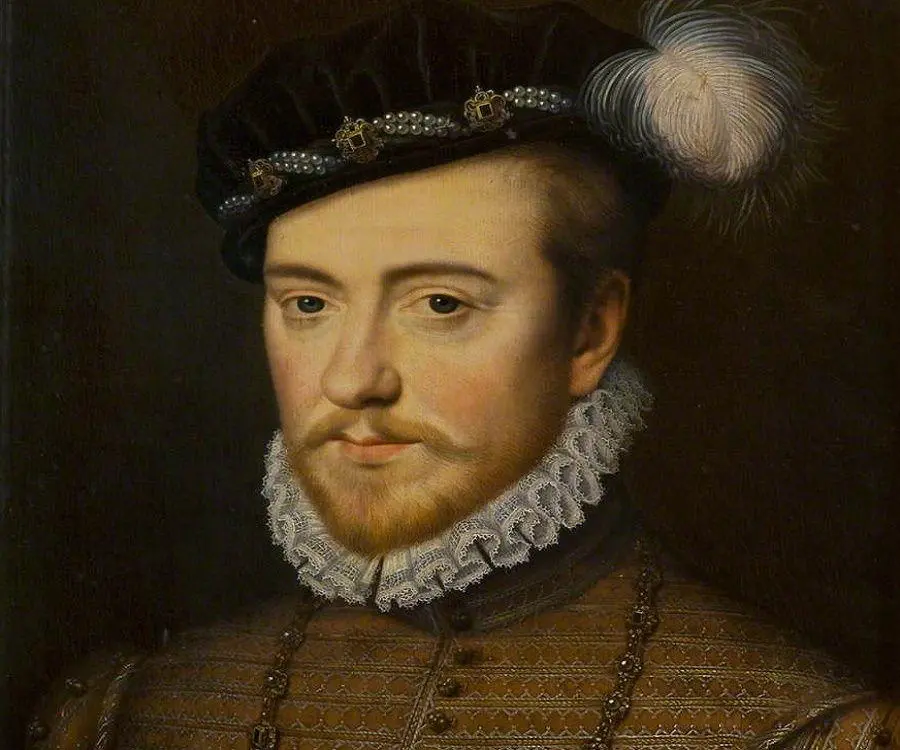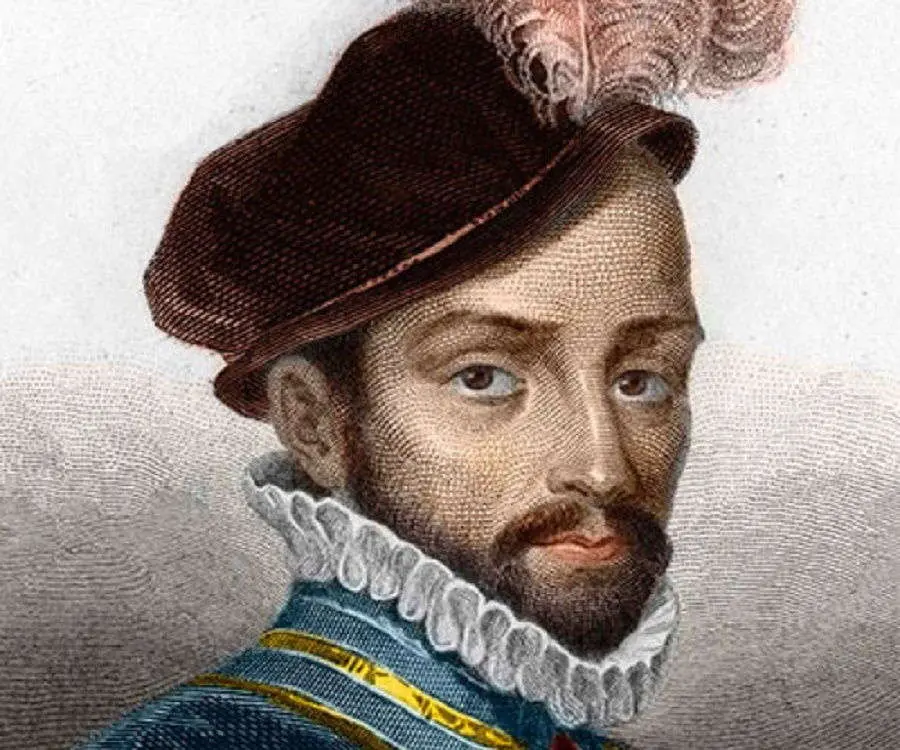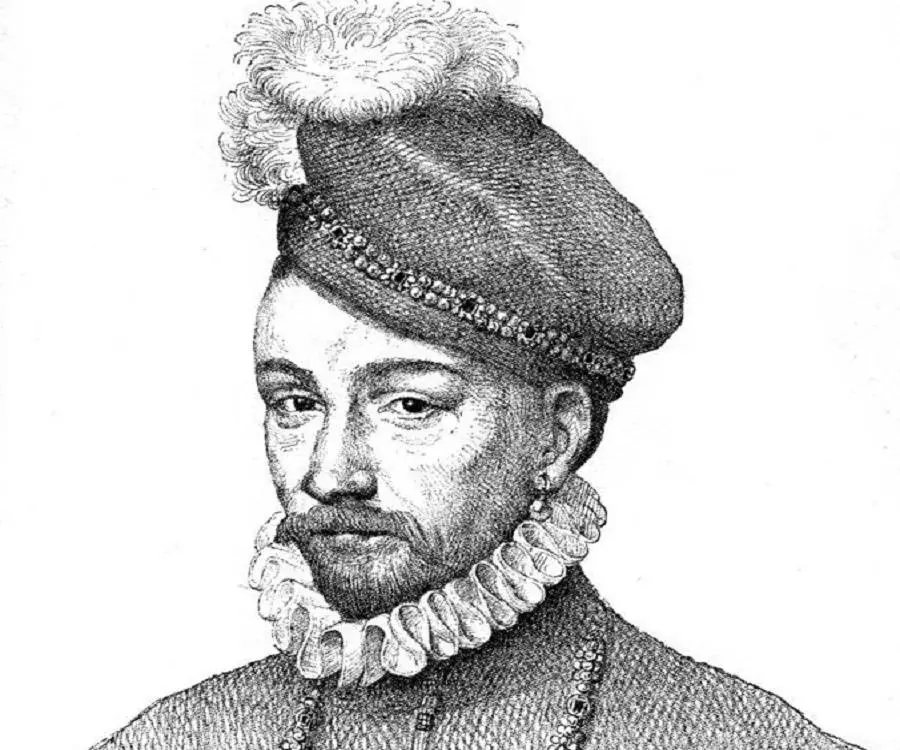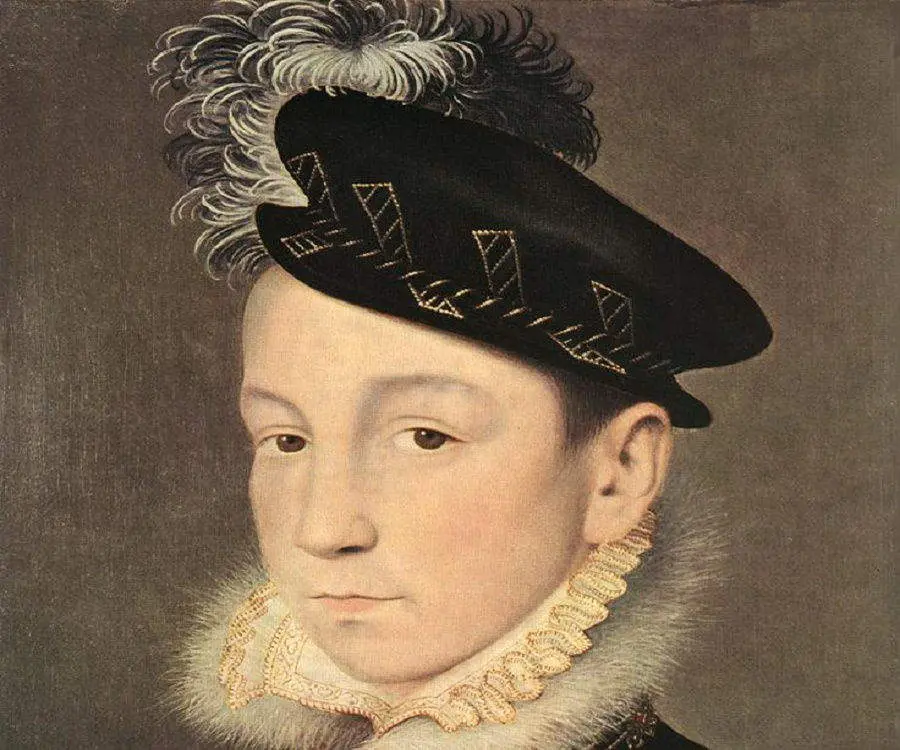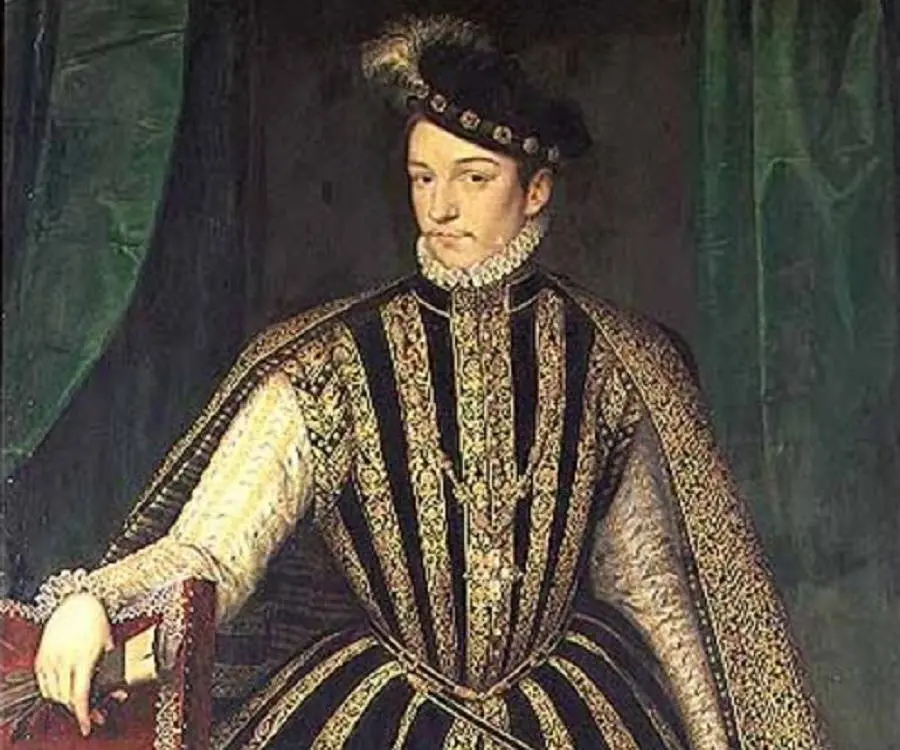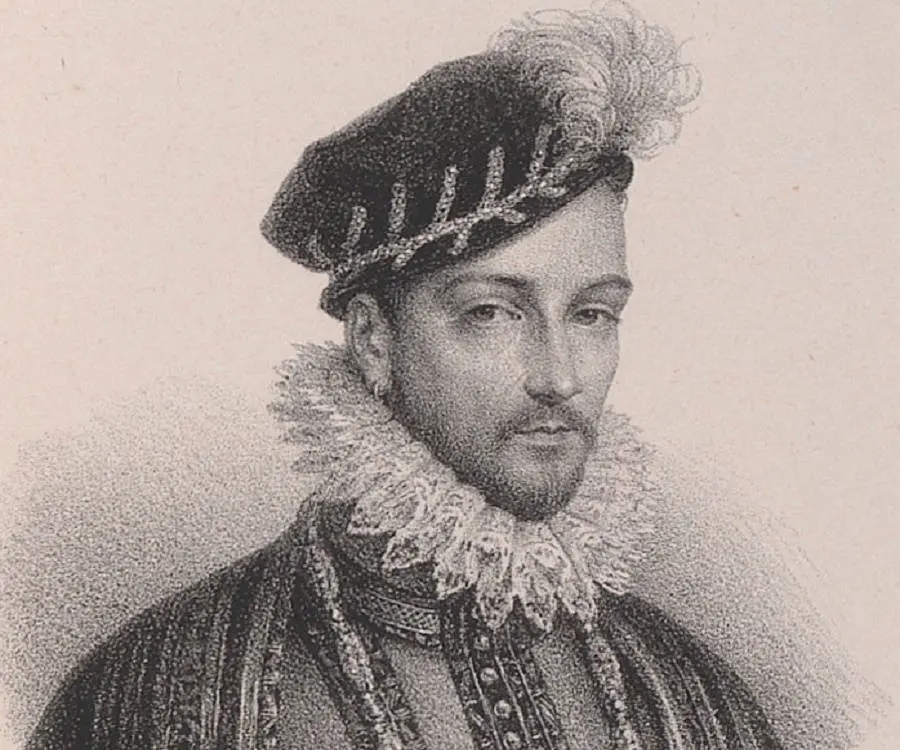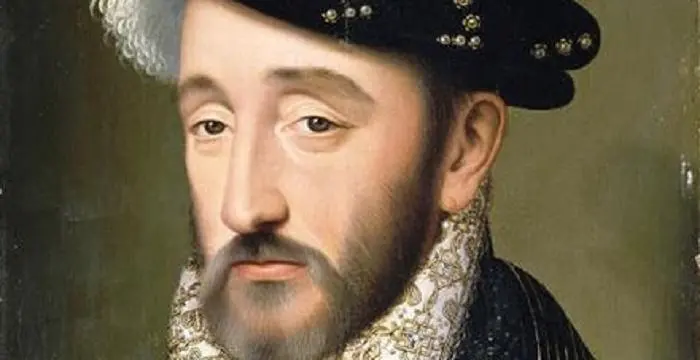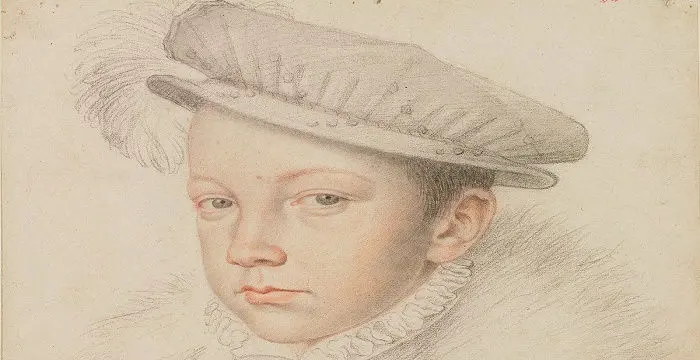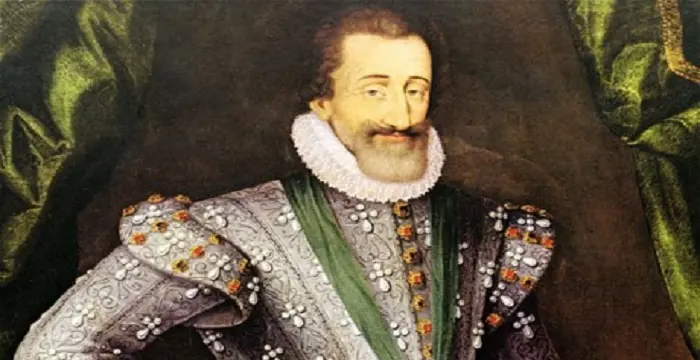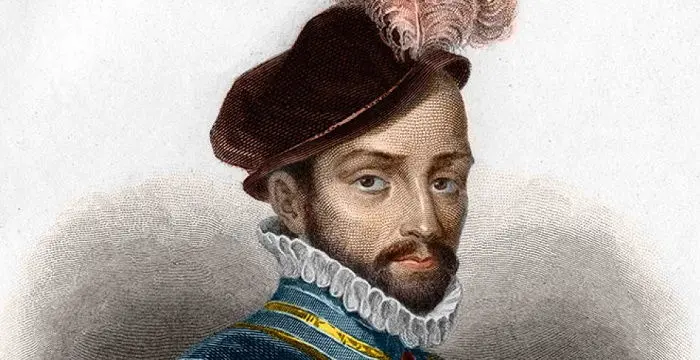
Charles IX of France - Emperors, Facts and Childhood
Charles IX of France's Personal Details
Charles IX was the king of France from 1560 to 1574
| Information | Detail |
|---|---|
| Birthday | June 27, 1550 |
| Died on | May 30, 1574 |
| Nationality | French |
| Famous | Historical Personalities, Emperors & Kings, Emperors, King of France, Kings |
| Spouses | Elisabeth of Austria, Queen of France (m. 1570) |
| Siblings | Francis II of France, Henry III of France, Margaret of Valois |
| Birth Place | Saint-Germain-en-Laye |
| Gender | Male |
| Father | Henry II of France |
| Sun Sign | Cancer |
| Born in | Saint-Germain-en-Laye |
| Famous as | King of France |
| Died at Age | 23 |
// Famous Kings
Sundiata Keita
Sundiata Keita was the founder of the Mali Empire in West Africa. This biography profiles his childhood, early life, struggles, founding of empire, rule, administration, achievements and also gives some fun facts.
Ashoka
Ashoka was the third emperor of the Mauryan Dynasty and ruled almost the entire Indian subcontinent. This biography profiles his childhood, life, reign, achievements and timeline
Murad IV
Murad IV was one of the mighty Sultans in the history of the Ottoman Empire. This biography profiles his childhood, family, accession, rule, administration and timeline.
Charles IX of France's photo
Who is Charles IX of France?
Charles IX was the king of France from 1560 to 1574. He was a monarch of the ‘House of Valois–Angoulême’ and son of King Henry II of France and Catherine de' Medici. France witnessed a number of wars of religion, including the appalling ‘St. Bartholomew’s Day Massacre’ of 1572, during his reign. After the death of his elder brother, Francis II, he inherited the throne at the age of 10. Thus, his mother, Catherine de' Medici, who was appointed as the regent, took all administrative decisions. Even after attaining majority, he was under her domination and was incapable of taking independent decisions. He liked hunting and wrote poetry. During his reign, the conflicts between the Protestants and the Roman Catholics began with the massacre of Wassy. Charles, with his mother, made several unsuccessful attempts at establishing peace between the two factions. Finally, he arranged the marriage of his sister, Margaret, with Protestant nobleman Henry of Navarre. However, the gathering of the Protestants concluded in a massacre, which he allowed on his mother’s instigation. It affected his already frail mental and physical health. He died of tuberculosis in 1574. He was married to Elisabeth of Austria and did not have a legitimate male heir.
// Famous Emperors
Sundiata Keita
Sundiata Keita was the founder of the Mali Empire in West Africa. This biography profiles his childhood, early life, struggles, founding of empire, rule, administration, achievements and also gives some fun facts.
Ashoka
Ashoka was the third emperor of the Mauryan Dynasty and ruled almost the entire Indian subcontinent. This biography profiles his childhood, life, reign, achievements and timeline
Murad IV
Murad IV was one of the mighty Sultans in the history of the Ottoman Empire. This biography profiles his childhood, family, accession, rule, administration and timeline.
Childhood & Early Life
Charles IX or Charles Maximilian was born on June 27, 1550, at the royal ‘Chateau of Saint-Germain-en-Laye’ (around 19 kilometers from Paris), to King Henry II of France and Catherine de' Medici. The third son and the fifth child of the royal couple, he was designated as the duke of Angoulême since birth. After the death of the king’s second son and his elder brother, Louis, in October 1550, he became the duke of Orléans. On May 14, 1564, he was presented the ‘Order of the Garter’ by Henry Carey.
King Henry II died in 1559 and Charles’s elder brother ascended to the throne as King Francis II. However, he died in December 1560. On December 5, 1560, Charles, who was 10 years old then, was proclaimed as the king. His mother, Catherine de' Medici, was appointed as the regent, as her son was too young to rule. Later, she acted as the governor of France.
Charles IX was consecrated at the cathedral in Reims on May 15, 1561. Antoine of Bourbon was appointed as the lieutenant general of France. He was the husband of Queen Joan III of Navarre and was also in the line of succession to the French throne.
Humanist Jacques Amyot was appointed to supervise Charles’s education. The king studied literature under his guidance. He developed a liking for writing poetry and was interested in hunting. He was a patron of a literary group of French writers named ‘La Pléiade.’
Reign As King
His reign witnessed a severe enmity between two sections of religion in France. The Huguenots were Protestants and followers of Calvinism, while the ‘Catholic League’ was led by the ‘House of Guise.’ The regent of France, Queen Catherine, was Catholic, but in order to maintain peace, she initially tried to keep a balance between the two factions.
The trouble between these two groups had begun even before Charles IX had become the king. To gain power over France, some Huguenots at Amboise conspired to abduct young King Francis II. They also planned to arrest Catholic nobleman Francis, Duke of Guise, and his brother, Charles, Cardinal of Lorraine. The ‘Amboise Conspiracy’ was foiled and the ‘House of Guise’ executed hundreds of Huguenots.
Then there were incidents of Protestant iconoclasm, followed by Catholic counter-attacks. In 1561, the regent arranged a religious conference at Poissy, in an attempt to reconcile the two factions. This came to be known as the ‘Colloquy of Poissy.’ However, it did not work. Thus, in January 1562, she propagated a declaration of tolerance and made concessions to Protestants in the ‘Edict of Saint-Germain.’
The Catholics detested these concessions made to the Protestants. They wanted to avenge the ‘Amboise Conspiracy.’ ‘The Duke of Guise,’ along with his forces, attacked and killed a number of Huguenots in Wassy on March 1, 1562. This came to be known as the ‘Massacre of Wassy’ and was the beginning of the French wars of religion.
There was retaliation from the Huguenots, resulting in battles at Loire Valley, Rouen, Dreux, and Orléans. During these battles, the leaders from both the sides were killed or captured. Francis, the duke of Guise, was killed in February 1563, during the siege of Orléans. On March 19, 1563, Queen Catherine signed the ‘Edict of Pacification’ (or the ‘Edict of Amboise’) to bring about a truce. That was the end of the first phase of the French wars of religion.
According to French tradition, Charles IX declared his legal majority in August 1563, after his 13th birthday. This put a formal end to the regency. However, Charles was not very efficient at making decisions and remained under his mother’s domination. He suffered from poor health and was not mentally stable.
In March 1564, Charles and Catherine began their grand tour of France, which lasted for two years. They toured through places such as Lyon, Salon-de-Provence, Carcassonne, Toulouse, Bayonne, La Rochelle and Moulins. In Toulouse, he and his brother, Henry, were confirmed. In 1564, Charles issued the ‘Edict of Roussillon,’ which declared that the year would begin on January 1 throughout France.
In 1567, there were reports of iconoclasm in Flanders. Charles supported the Catholic faction. This made the Huguenots insecure and they conspired to capture Charles and other royal family members at Meaux. However, the plan did not succeed, instigating the second war of religion. The Huguenot rioters attacked the cities and massacred Catholics at Nîmes on Michaelmas. The incident came to be known as ‘Michelade.’
Anne de Montmorency, the royal commander-in-chief, was killed in the Battle of Saint-Denis, and the Protestants were defeated. In March 1568, Charles and Catherine issued the ‘Peace of Longjumeau,’ which ended the second war of the French wars of religion. However, as the treaty allowed privileges to the Protestants, it met with strong opposition. Thus, the privileges were revoked. As a result, the war began once again.
Interventions from various foreign factors culminated in the ‘Peace of Saint-Germain-en-Laye,’ a treaty that was signed on August 5, 1570, at the royal ‘Château de Saint-Germain-en-Laye.’ It brought back privileges for the Protestants.
Following the treaty, King Charles IX continued to get swayed by the disciplined Huguenot leader Admiral Gaspard de Coligny. However, his mother and Henry, the duke of Guise (son of Francis, the previous duke of Guise), disliked the growing importance of Coligny.
In order to find a peaceful solution to the wars of religion, the royalty arranged the marriage of Charles’s sister, Margaret of Valois, and Huguenot nobleman Henry of Navarre. The wedding, which was held on August 18, 1572, brought many Protestant noblemen to Paris. A failed attempt of assassinating Coligny on August 22 caused trepidation in the city. Followers of both the factions were afraid of an attack.
Henry, the duke of Guise, murdered Coligny in the early hours of August 24 and had the body thrown in the streets of Paris. This sparked a mass killing, where the Huguenots were massacred for the next five days. Around 10,000 Huguenots were killed in Paris and the surrounding provinces. This came to be known as the ‘St. Bartholomew’s Day Massacre.’ Henry of Navarre agreed to convert to Catholicism and escaped death. On his mother’s provocation, Charles IX did not attempt to stop the killings and allowed the massacre to continue.
After this carnage, the power of the Protestants reduced considerably. In spite of this, there was a new start to the religious war. Charles commanded his army to attack the Huguenot-dominated city of La Rochelle. The siege continued till July 1573, and ended in negotiations and the signing of the ‘Edict of Bologne,’ which allowed the Protestants limited religious liberty.
His delicate physical and mental health worsened after the 1572 massacre. He suffered from mood swings. He blamed himself and his mother for the bloodbath and became melancholy. He developed tuberculosis and his health deteriorated. On May 30, 1574, at the age of 23, Charles IX died at the ‘Château de Vincennes.’
Personal Life
Charles IX married Elisabeth of Austria on November 26, 1570. The couple had a daughter, Marie Elisabeth of Valois. He died without any legitimate male heir. However, he had an illegitimate son, Charles, Duke of Angoulême, from his mistress, Marie Touchet.
Charles had written a book on hunting named ‘La Chasse Royale.’ It was published in 1625, long after his death.
// Famous King of France
Henry II of France
Henry II of France was a monarch who ruled France from 1547 to 1559. Check out this biography to know about his birthday, childhood, family life, achievements and fun facts about him.
Francis II of France
Francis II of France was the eldest son of King Henry II and Catherine de’ Medici. Check out this biography for more information about his childhood, family, personal life, etc.
Henry IV of France
Henry IV was King of Navarre and King of France from 1589 to 1610. This biography of Henry IV profiles his childhood, life, reign, achievements and timeline.
Charles IX of France biography timelines
- // 1561 To Jan 1562Then there were incidents of Protestant iconoclasm, followed by Catholic counter-attacks. In 1561, the regent arranged a religious conference at Poissy, in an attempt to reconcile the two factions. This came to be known as the ‘Colloquy of Poissy.’ However, it did not work. Thus, in January 1562, she propagated a declaration of tolerance and made concessions to Protestants in the ‘Edict of Saint-Germain.’
- // 15th May 1561Charles IX was consecrated at the cathedral in Reims on May 15, 1561. Antoine of Bourbon was appointed as the lieutenant general of France. He was the husband of Queen Joan III of Navarre and was also in the line of succession to the French throne.
- // 1st Mar 1562The Catholics detested these concessions made to the Protestants. They wanted to avenge the ‘Amboise Conspiracy.’ ‘The Duke of Guise,’ along with his forces, attacked and killed a number of Huguenots in Wassy on March 1, 1562. This came to be known as the ‘Massacre of Wassy’ and was the beginning of the French wars of religion.
- // Feb 1563 To 19th Mar 1563There was retaliation from the Huguenots, resulting in battles at Loire Valley, Rouen, Dreux, and Orléans. During these battles, the leaders from both the sides were killed or captured. Francis, the duke of Guise, was killed in February 1563, during the siege of Orléans. On March 19, 1563, Queen Catherine signed the ‘Edict of Pacification’ (or the ‘Edict of Amboise’) to bring about a truce. That was the end of the first phase of the French wars of religion.
- // Aug 1563According to French tradition, Charles IX declared his legal majority in August 1563, after his 13th birthday. This put a formal end to the regency. However, Charles was not very efficient at making decisions and remained under his mother’s domination. He suffered from poor health and was not mentally stable.
- // Mar 1564In March 1564, Charles and Catherine began their grand tour of France, which lasted for two years. They toured through places such as Lyon, Salon-de-Provence, Carcassonne, Toulouse, Bayonne, La Rochelle and Moulins. In Toulouse, he and his brother, Henry, were confirmed. In 1564, Charles issued the ‘Edict of Roussillon,’ which declared that the year would begin on January 1 throughout France.
- // 1567In 1567, there were reports of iconoclasm in Flanders. Charles supported the Catholic faction. This made the Huguenots insecure and they conspired to capture Charles and other royal family members at Meaux. However, the plan did not succeed, instigating the second war of religion. The Huguenot rioters attacked the cities and massacred Catholics at Nîmes on Michaelmas. The incident came to be known as ‘Michelade.’
- // Mar 1568Anne de Montmorency, the royal commander-in-chief, was killed in the Battle of Saint-Denis, and the Protestants were defeated. In March 1568, Charles and Catherine issued the ‘Peace of Longjumeau,’ which ended the second war of the French wars of religion. However, as the treaty allowed privileges to the Protestants, it met with strong opposition. Thus, the privileges were revoked. As a result, the war began once again.
- // 5th Aug 1570Interventions from various foreign factors culminated in the ‘Peace of Saint-Germain-en-Laye,’ a treaty that was signed on August 5, 1570, at the royal ‘Château de Saint-Germain-en-Laye.’ It brought back privileges for the Protestants.
- // 26th Nov 1570Charles IX married Elisabeth of Austria on November 26, 1570. The couple had a daughter, Marie Elisabeth of Valois. He died without any legitimate male heir. However, he had an illegitimate son, Charles, Duke of Angoulême, from his mistress, Marie Touchet.
- // 1572 To 30th May 1574His delicate physical and mental health worsened after the 1572 massacre. He suffered from mood swings. He blamed himself and his mother for the bloodbath and became melancholy. He developed tuberculosis and his health deteriorated. On May 30, 1574, at the age of 23, Charles IX died at the ‘Château de Vincennes.’
- // 18th Aug 1572In order to find a peaceful solution to the wars of religion, the royalty arranged the marriage of Charles’s sister, Margaret of Valois, and Huguenot nobleman Henry of Navarre. The wedding, which was held on August 18, 1572, brought many Protestant noblemen to Paris. A failed attempt of assassinating Coligny on August 22 caused trepidation in the city. Followers of both the factions were afraid of an attack.
- // Jul 1573After this carnage, the power of the Protestants reduced considerably. In spite of this, there was a new start to the religious war. Charles commanded his army to attack the Huguenot-dominated city of La Rochelle. The siege continued till July 1573, and ended in negotiations and the signing of the ‘Edict of Bologne,’ which allowed the Protestants limited religious liberty.
- // 1625Charles had written a book on hunting named ‘La Chasse Royale.’ It was published in 1625, long after his death.
// Famous Historical Personalities
Sundiata Keita
Sundiata Keita was the founder of the Mali Empire in West Africa. This biography profiles his childhood, early life, struggles, founding of empire, rule, administration, achievements and also gives some fun facts.
Ashoka
Ashoka was the third emperor of the Mauryan Dynasty and ruled almost the entire Indian subcontinent. This biography profiles his childhood, life, reign, achievements and timeline
Jetsun Pema
Jetsun Pema is the Queen consort of Bhutan. Check out this biography to know about her childhood, family life, achievements and fun facts about her life.
Murad IV
Murad IV was one of the mighty Sultans in the history of the Ottoman Empire. This biography profiles his childhood, family, accession, rule, administration and timeline.
Xerxes I
Xerxes I (Xerxes the Great) was the fourth and the most famous king of the Archaemenid dynasty of Persia. This biography profiles his childhood, family, personal life, life history, achievements, campaigns, administration, death and other facts.
Sargon of Akkad
Sargon of Akkad, also called ‘Sargon the Great’, ‘Sarru-Kan’ and ‘Shar-Gani-Sharri’, was the founder and first king of the Akkadian Empire. This biography profiles his childhood, life, rule, administration, timeline, and gives some fun facts.
Charles IX of France's FAQ
What is Charles IX of France birthday?
Charles IX of France was born at 1550-06-27
When was Charles IX of France died?
Charles IX of France was died at 1574-05-30
Where was Charles IX of France died?
Charles IX of France was died in Vincennes
Which age was Charles IX of France died?
Charles IX of France was died at age 23
Where is Charles IX of France's birth place?
Charles IX of France was born in Saint-Germain-en-Laye
What is Charles IX of France nationalities?
Charles IX of France's nationalities is French
Who is Charles IX of France spouses?
Charles IX of France's spouses is Elisabeth of Austria, Queen of France (m. 1570)
Who is Charles IX of France siblings?
Charles IX of France's siblings is Francis II of France, Henry III of France, Margaret of Valois
Who is Charles IX of France's father?
Charles IX of France's father is Henry II of France
What is Charles IX of France's sun sign?
Charles IX of France is Cancer
How famous is Charles IX of France?
Charles IX of France is famouse as King of France



